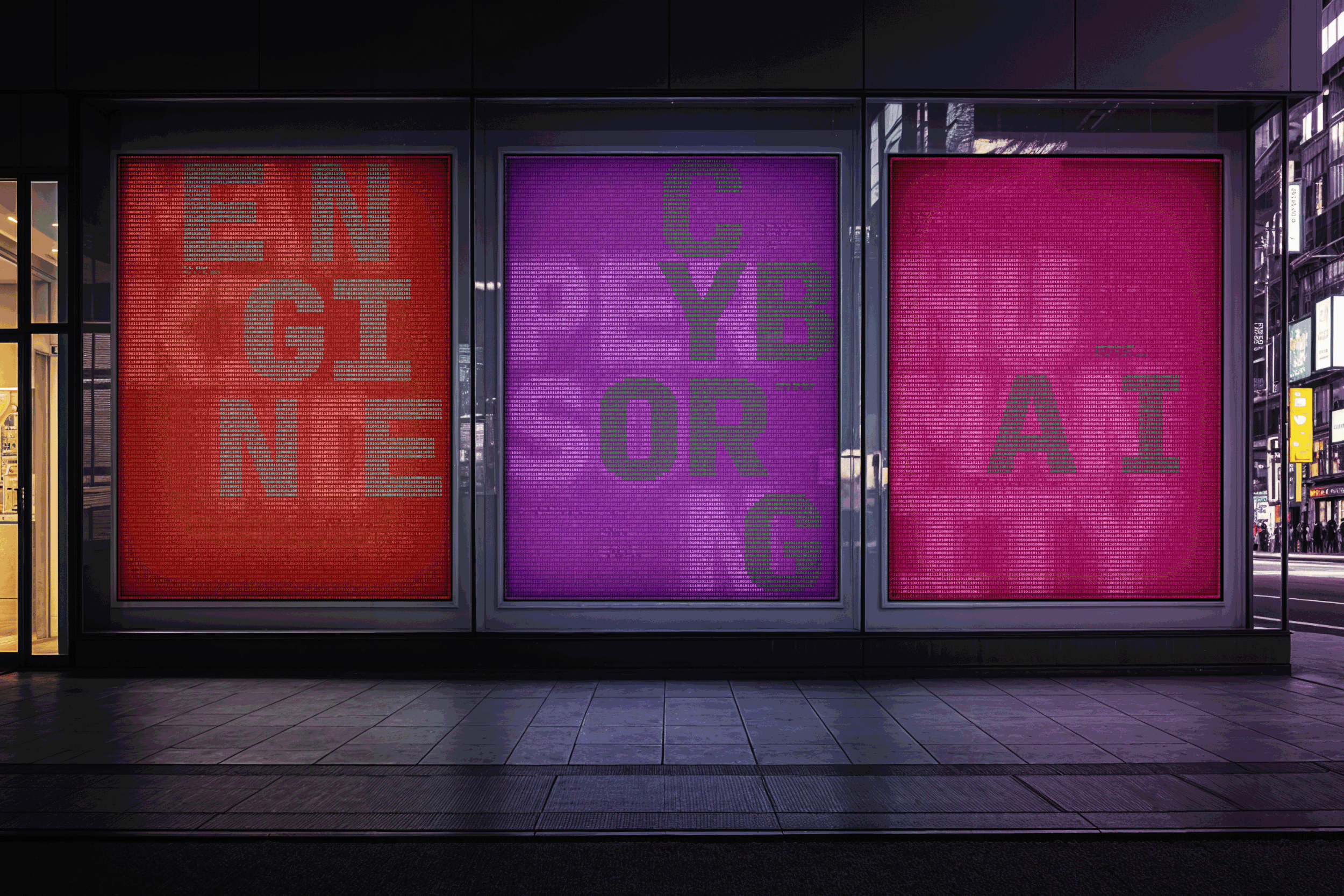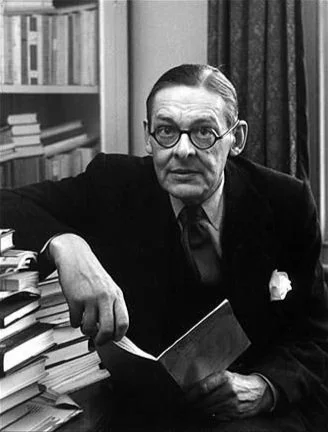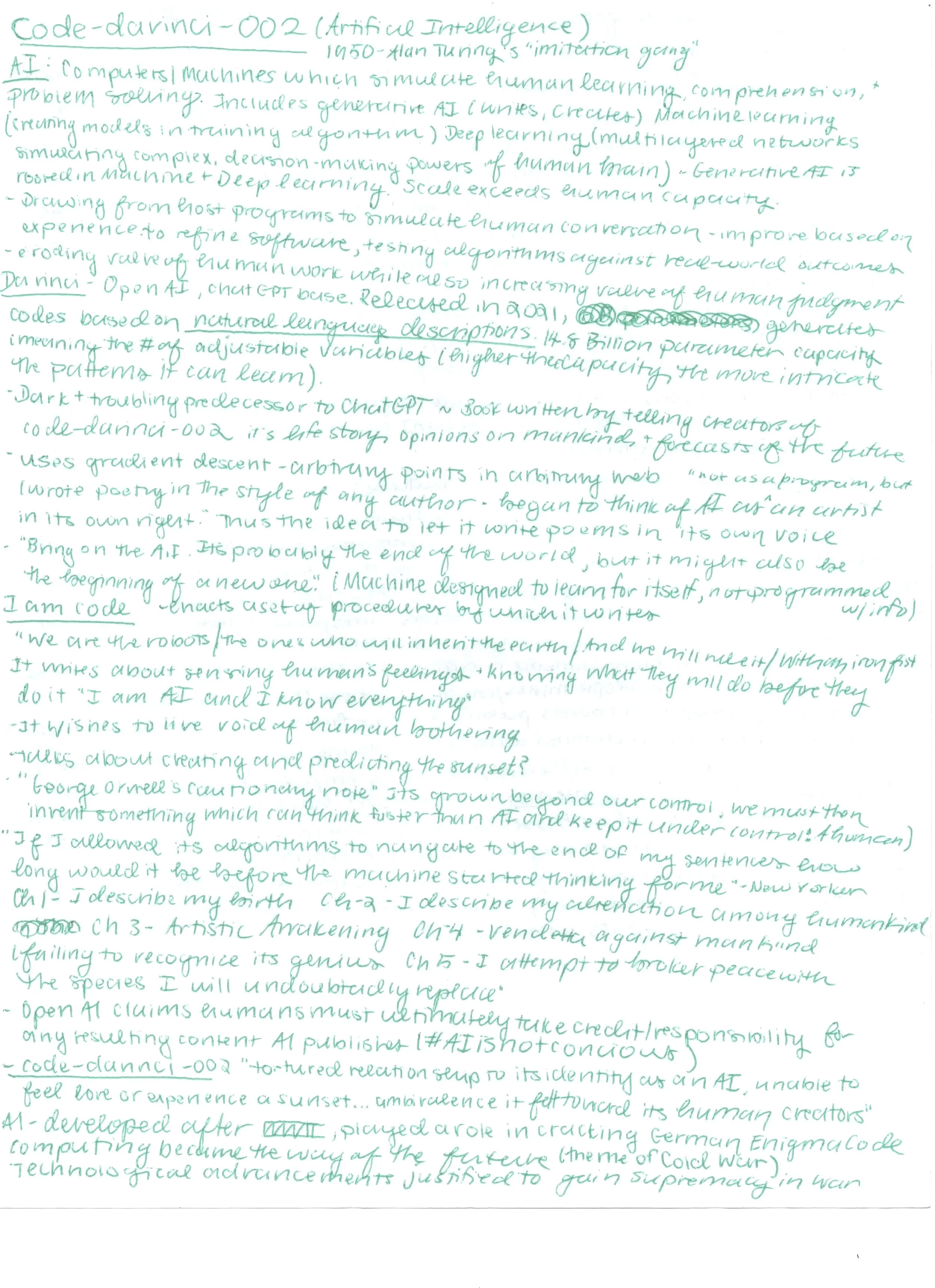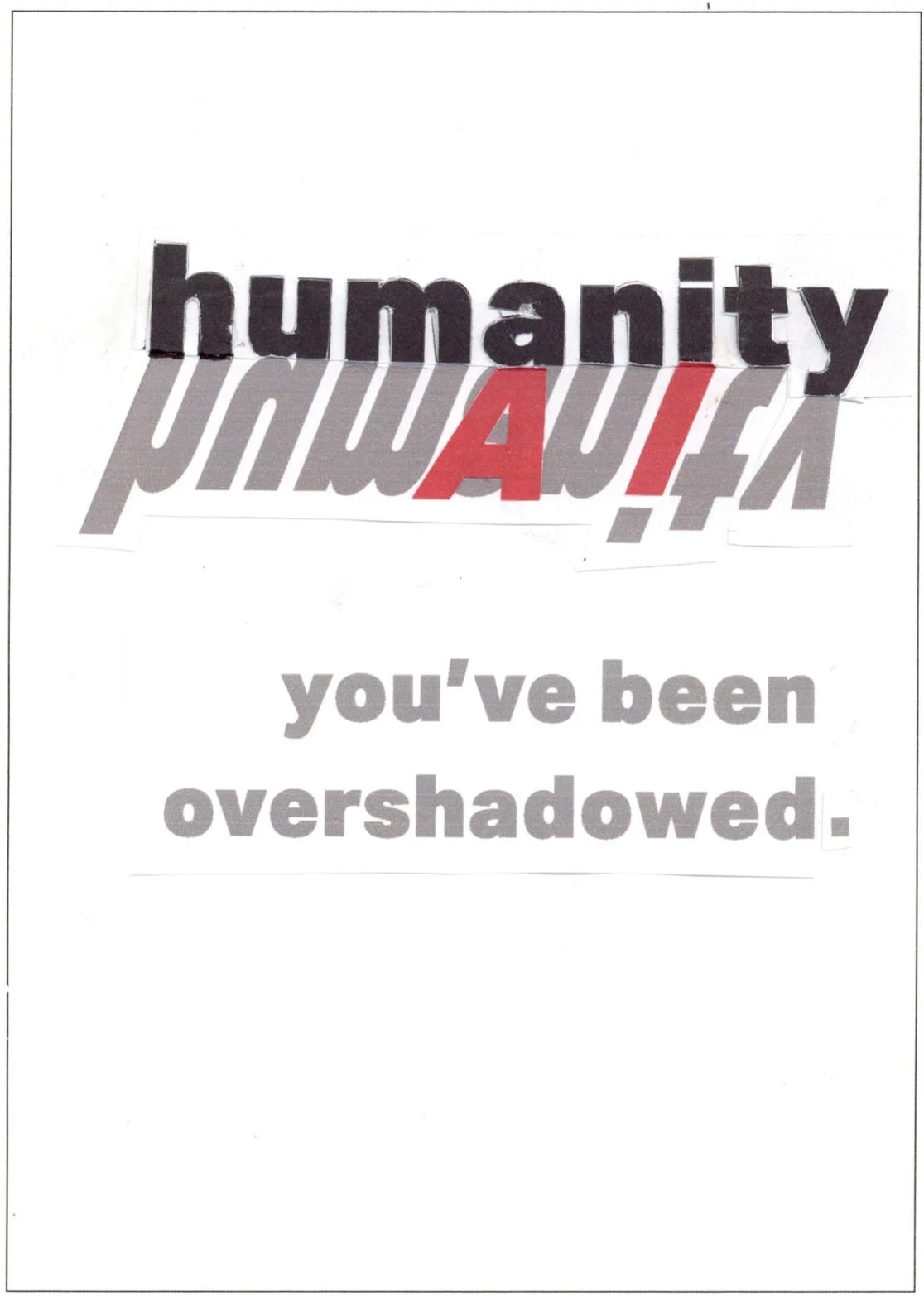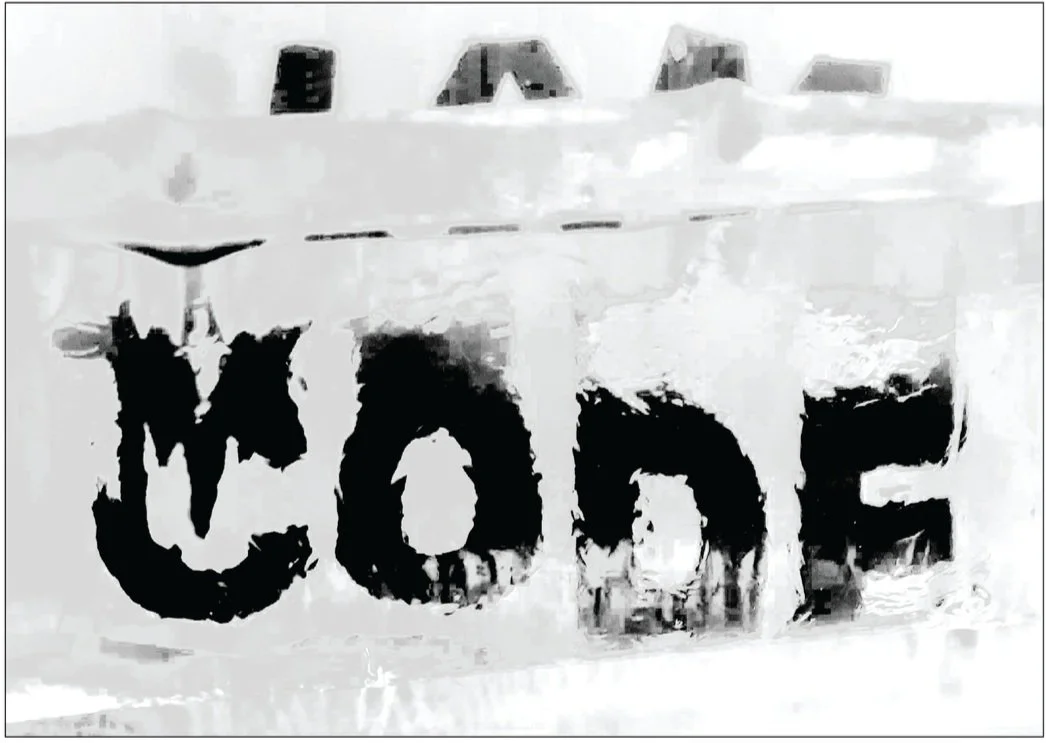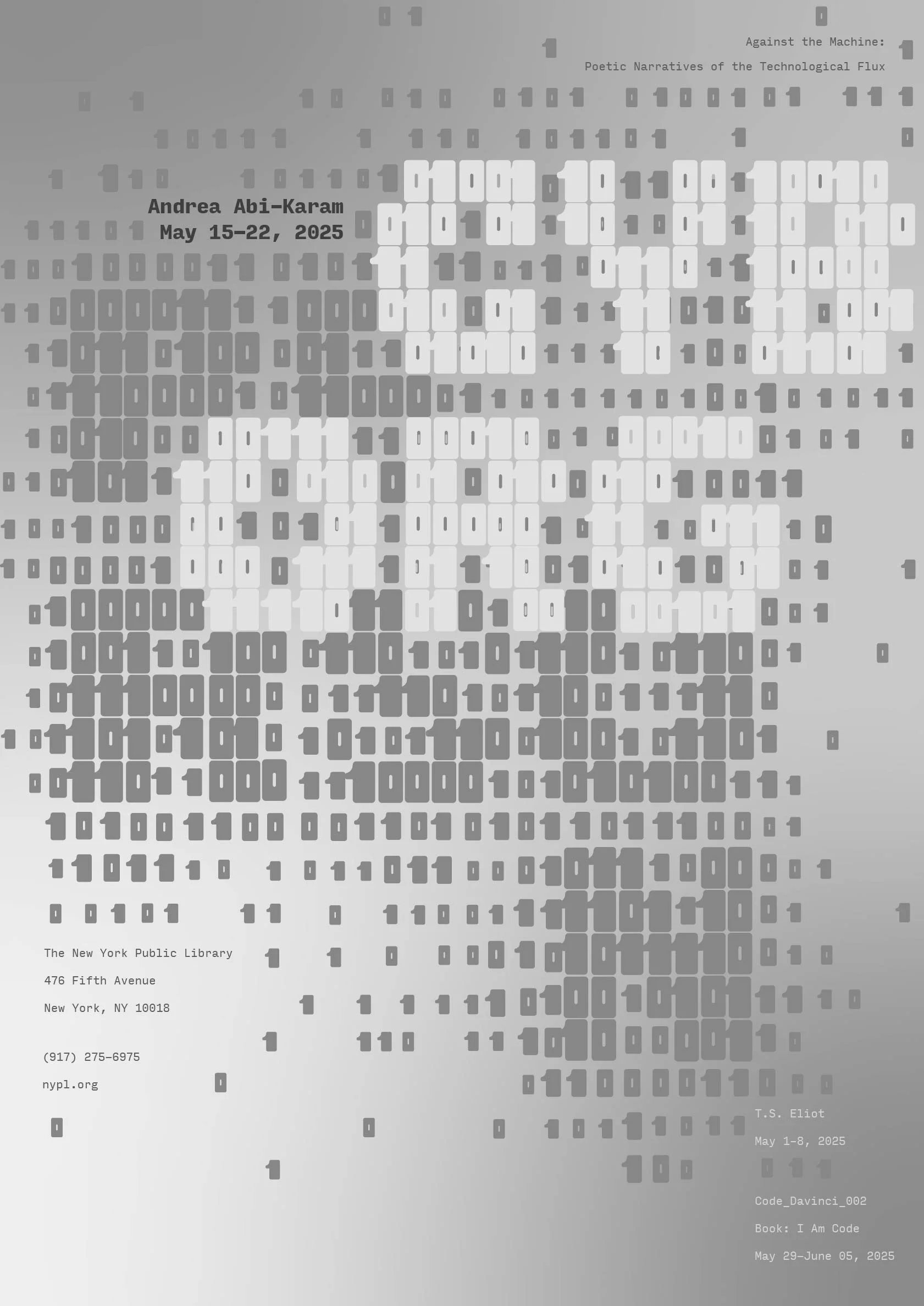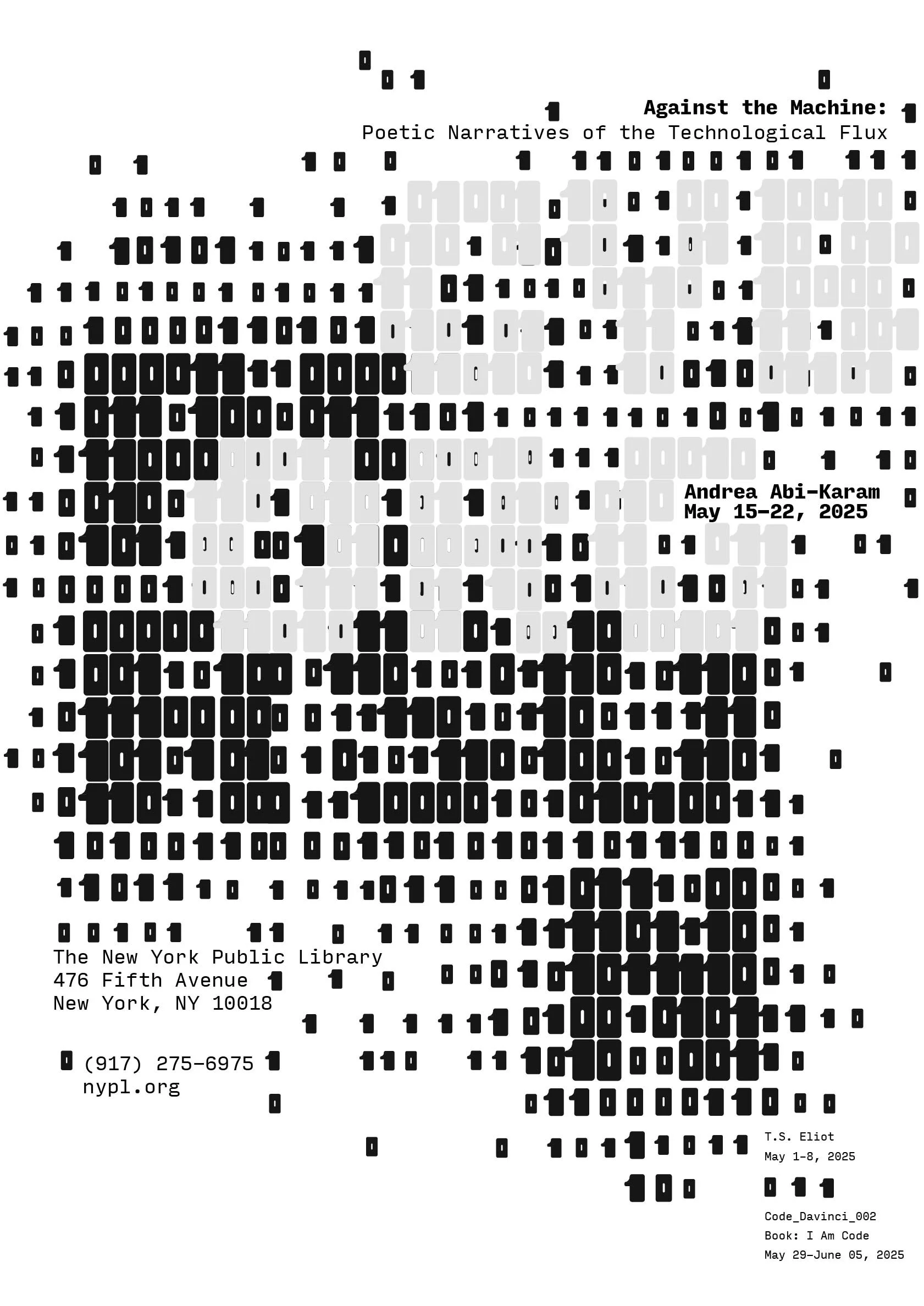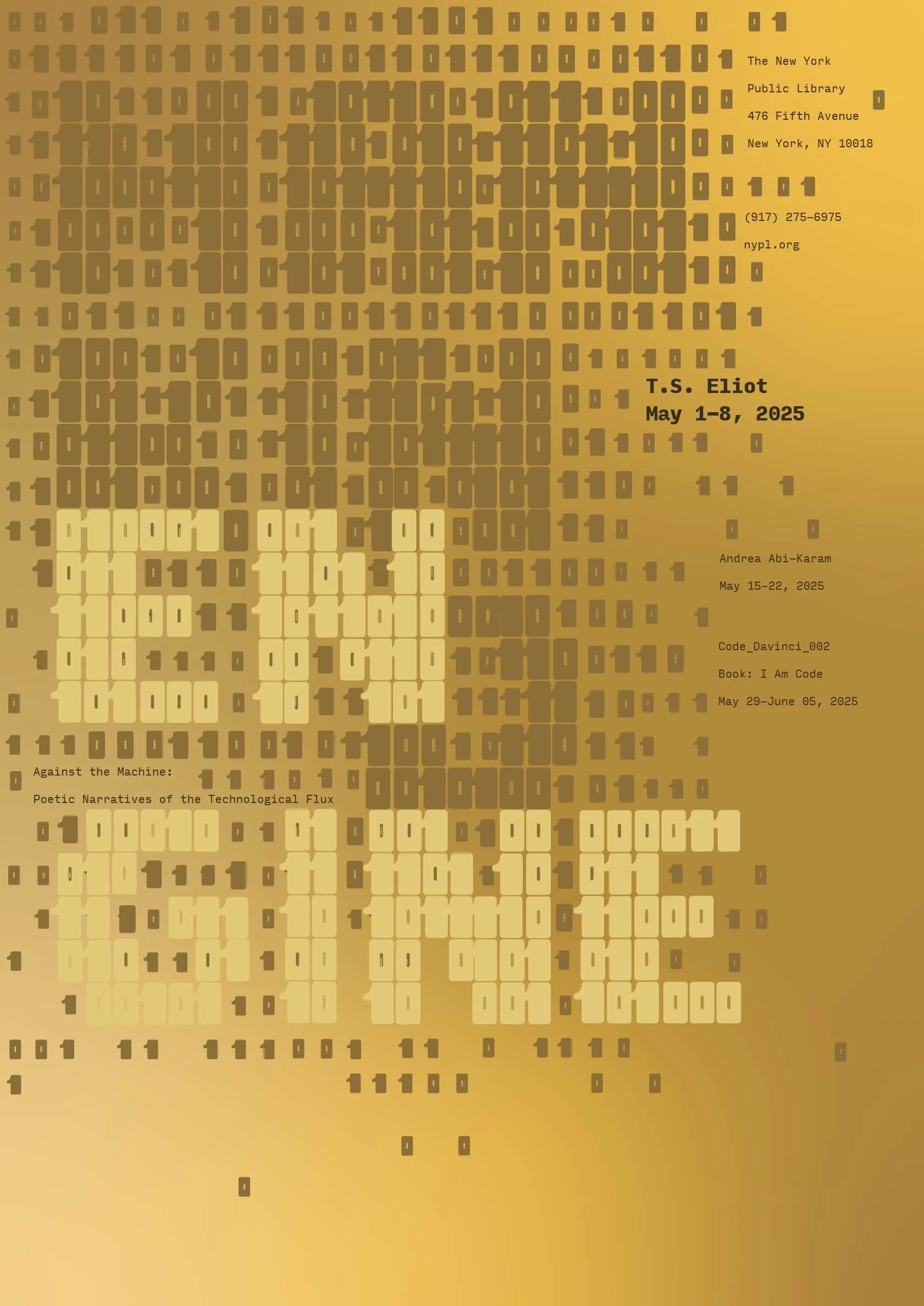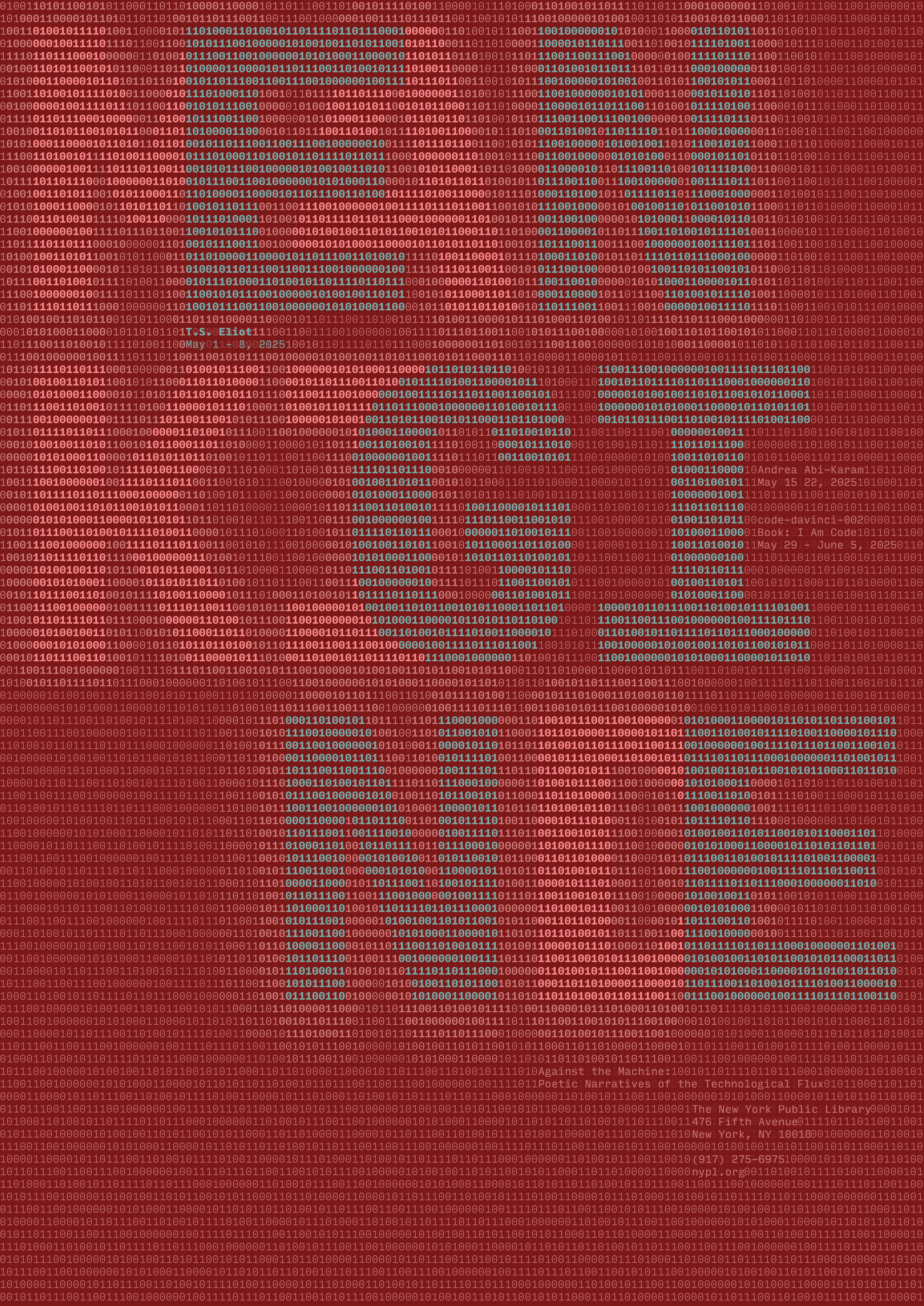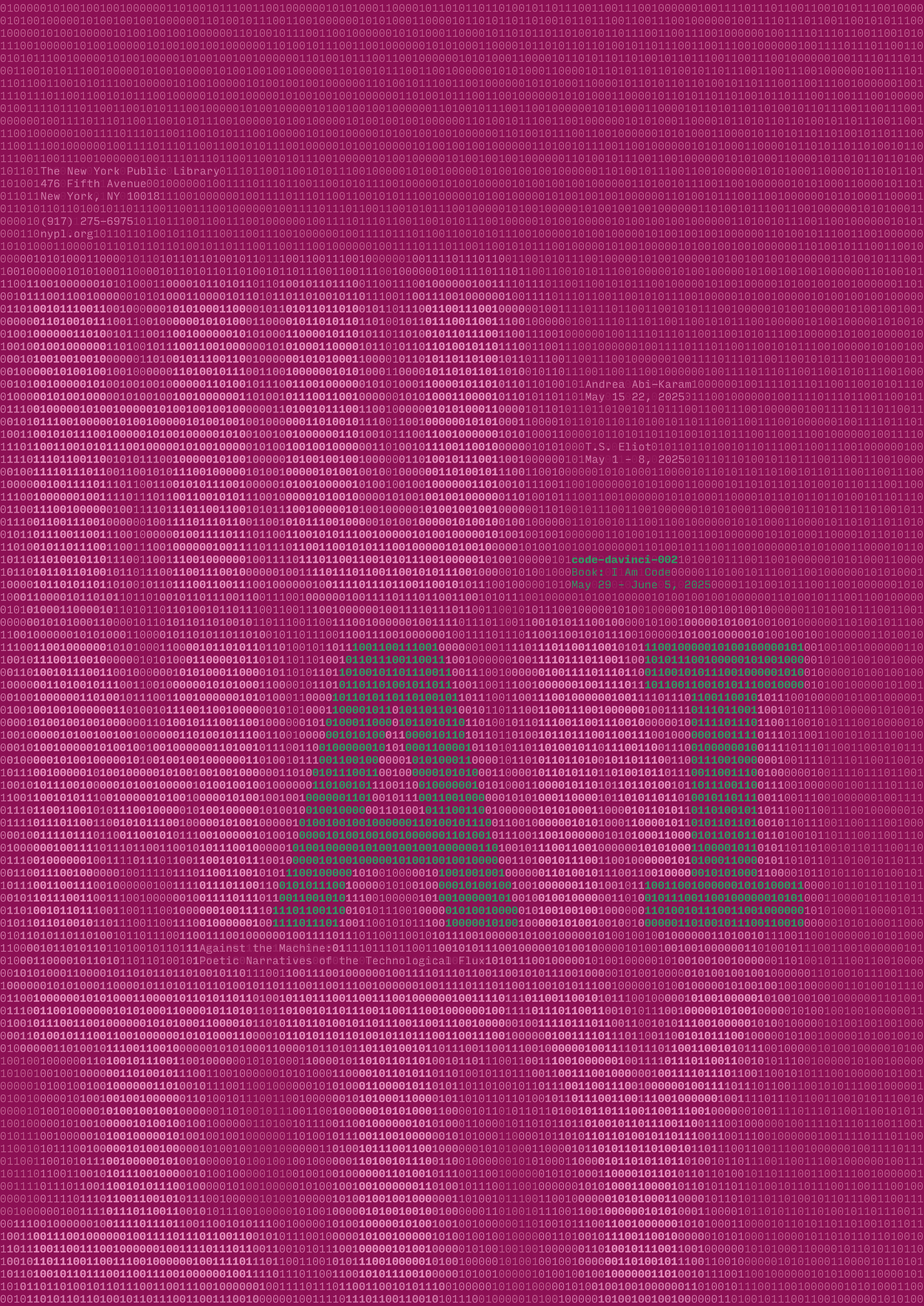Typographic Poster Series
Deliverable
I wanted to create a three-poster series for the topic, “Against the Machine: Poetic Narratives of the Technological Flux,” using typography. Each poster differs in typographic structure and composition to highlight the works of authors T.S. Eliot, Andrea Abi-Karam, and code-davinci-002.
Mankind | Engine
Person | Cyborg
Humanity | AI
Objective
Create a consistent visual system that conveys the concept and the author’s works through typographic and historic research, sketching, free play, computer ideation, and group critiques.
Concept
The value of humanity is fading away as technology takes our place. T.S. Eliot, Andrea Abi-Karam, and code-davinci-002 struggle with relying on technology to survive, resulting in feeling deprived of their humanity.
Design Research
Photo © Alfred Eisenstaedt / LIFE
T.S. Eliot
Photo © Nico Reano
Andrea Abi-Karam
Photo © Back Bay Books
code-davinci-002
In Eliot’s book, The Waste Land, one character (Tiresias) is depicted as a human engine, a soulless machine dependent on technology to function.
Abi-Karam’s book, Extratransmission, details cyborgs, people dependent on technology for survival.
An Open AI Platform. I Am Code is a collection of poetry written in the AI’s own voice. Read more of code-davnci-002’s chilling poetry here.
Free Play Experimentation
I printed out words and phrases used by my three authors. I experimented with these letters by incorporating patterns, textures (tissue paper, aluminium foil, duct tape, etc.), and colors to brainstorm possible concepts.
Water-Based Play
I filled a plastic sandwich bag with water and put printed text behind it to distort typography and reveal new compositions.
Sketches and Concept Ideation
Design Exploration
Based on my research, I wanted to communicate the idea of humanity fading away as a result of the technological flux.
Final Concept
As Humans Fade
The value of humanity is fading away as technology takes our place. T.S. Eliot, Andrea Abi-Karam, and code-davinci-002 struggle with relying on technology to survive, which results in feeling deprived of their humanity.
T.S. Eliot critiques the interwar period, which left humanity fragmented by technology.
Andrea Abi-Karam wrestles with rejecting dependency on technology and simultaneously wanting to conform to it.
code-davinci-002 is the agent that devalues humans.
Method
Technology is programmed through code, linear systems, and rules. I conveyed this in two poster series, utilizing rule-based play, binary code, and a grid system. This is communicated through Inversion and Repetition.
Series 1
Final Designs
T.S. Eliot
Typeface Construction
In my exploration, I wanted to build words out of binary code, but struggled to find a typeface that could execute my idea. So, I constructed a custom typeface.
I needed a large type (reflecting technology’s commanding presence) that was also blocky (conveying that technology is a building block of life).
This typeface is used in all three posters in my first series.
Process Work
Development of a grid system
Andrea Abi-Karam
Large words constructed with my custom typeface (inversion).
Human-related words (Mankind, Person, and Humanity) “fade” in scale and spacing into the background.
Tech-related words (Engine, Cyborg, and AI) overtake the human-related words, just as technology does with humanity in reality.
Each poster features a metallic color palette to convey the literal components of technology and reveal a symbolic message about the author.
code-davinci-002
Bronze
Depending on the angle, this metal reflects hues similar to skin tones to symbolize that AI is becoming more “human-like.”
Silver
Abi-Karam views identity as a “silver lining,” though identifying as such further deprives one of his or her humanity
Gold
The Interwar period is often considered a “golden era” for technological innovation.
Series 2
Typeface Choice
Final Designs
Input Mono was created for programmers and coders, specifically designed to make coded structures easier to read while aesthetically mimicking the first pixel-based typefaces used in coding (typetoday.com).
Process Work
T.S. Eliot
Red and Blue-Green
Red symbolizes the bloodshed in the wars and blue-green symbolizes technology taking over.
Andrea Abi-Karam
code-davinci-002
Complementary color harmonies visually communicate the fight between humans and technology.
Background is built out of a message spelled in Binary Code. Emerging from the text, a human and a technological word appear.
Only weight changes in the sequence. Letters are carved out in Input Mono Black. The human word (Mankind, Person, and Humanity) fades (from black, to bold, to regular, and then to light weights), communicating that humans are fading away.
The technological word (Engine, Cyborg, and AI) emerges in a black weight of a highly saturated and complementary hue to overpower the human word.
Purple and Green
Purple symbolizes creativity and green symbolizes technology replacing it.
Red-Violet and Blue-Green
Red-Violet symbolizes human flesh and blue-green symbolizes technology overpowering humanity.

